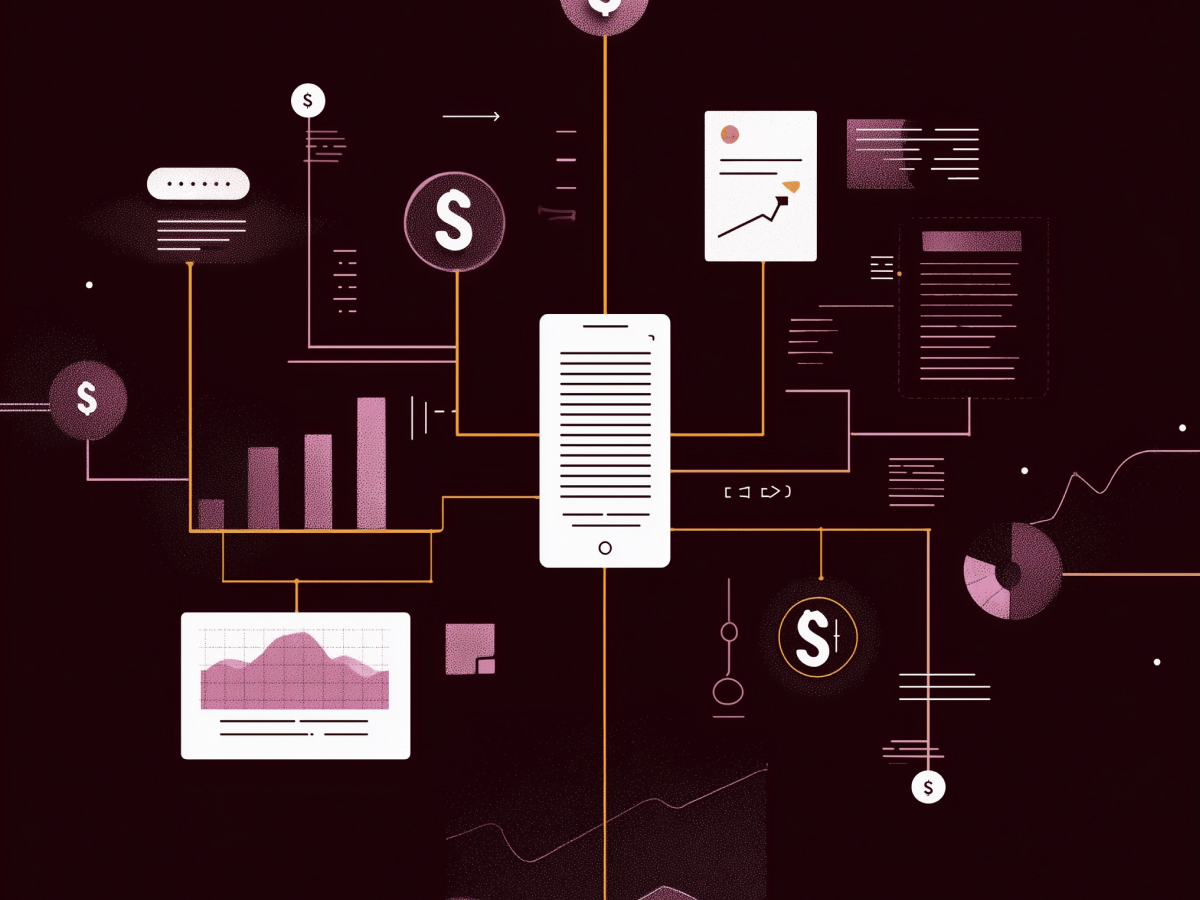Developer productivity is a fundamental measurement of a team’s ability to produce high-quality, functional code that meets business objectives—which is essential for aligning technical capabilities with strategic business goals, so that the development process contributes to the overall success of the organization.
What does developer productivity really mean?
Developer productivity measures a team’s capability to produce working code aligned with business goals—looking at more than the volume of code written; to include the quality, maintainability, and readability of the code.
Taking a holistic view here makes sure that the development efforts are prolific, sustainable, and scalable. Effective developer productivity integrates technical output with business outcomes, developing an environment in which every line of code directly supports the company’s strategic objectives.
Achieving harmony between productivity and team morale
Balancing productivity and team morale is key for long-term success. Leaders must pursue productivity improvements while also creating a supportive environment that prioritizes the health and culture of their teams.
Real-time data and proactive development methods help businesses strike this balance, so that leaders can make better informed decisions that promote both efficiency and employee well-being.
A positive work culture is a core tenet to sustaining long-term productivity.
When teams feel valued and supported, they’re far more likely to feel engaged, motivated, and innovative, which in turn helps businesses keep their top talent and drive continuous improvement. Leaders must stay vigilant in monitoring team morale, and address any issues promptly to prevent burnout and disengagement.
Key metrics to gauge developer success
Key indicators of developer productivity include code correctness, maintainability, and readability—which ultimately provide a comprehensive view of a developer’s performance and the overall quality of the codebase.
- Code correctness: Makes sure that the code functions as intended without errors. Correct code reduces the need for frequent fixes and updates, contributing to more stable and reliable software.
- Maintainability: Refers to how easily code can be modified or extended. High maintainability reduces technical debt and allows for quicker implementation of new features or bug fixes.
- Readability: Indicates how easily other developers can understand and work with the code. Readable code promotes collaboration and knowledge transfer, improving overall team efficiency and productivity.
Proven strategies for measuring developer productivity
Measuring developer productivity requires a balanced mix of qualitative and quantitative data. Using both DORA metrics and the SPACE framework provides a more holistic and accurate view of team ability and performance.
DORA metrics
DORA metrics are widely recognized as the standard for assessing developer productivity by providing a comprehensive view of software delivery performance, highlighting areas for improvement.
- Deployment frequency: Deployment frequency measures the number of software distributions within a specific timeframe. High deployment frequency indicates a streamlined and efficient development process, where new features and updates are delivered regularly.
- Lead time for changes: This metric tracks the time it takes for committed code to enter production. Shorter lead times suggest a more efficient workflow, where code changes are quickly reviewed, tested, and deployed. Reducing lead time can boost agility and responsiveness to market demands.
- Change failure rate: The change failure rate calculates the percentage of deployments that result in performance issues or require remediation. A lower change failure rate indicates higher quality code and more robust testing processes. Monitoring this metric helps identify areas for improvement in the development and testing phases.
- Time to restore service: Time to restore service measures the duration between a disruptive incident and its resolution. Faster resolution times reflect a team’s ability to respond to issues promptly and maintain system reliability—a key metric for assessing the effectiveness of incident management processes.
SPACE framework
The SPACE framework provides a holistic view of developer productivity by examining multiple dimensions of performance and satisfaction. Developed by researchers from GitHub, the University of Victoria, and Microsoft Research, the framework addresses common productivity myths and offers detailed insights into team activities and needs.
- Satisfaction: Satisfaction measures individual and team fulfillment related to their work, team dynamics, and company culture. High satisfaction levels correlate with better engagement and retention rates. Surveys, one-on-one meetings, and feedback sessions can help gauge satisfaction levels and identify areas for improvement.
- Performance: Performance evaluates project outcomes, including quality, reliability, maintainability, and service health. High performance indicates that the team is delivering valuable and sustainable software. Regular performance reviews and tracking key performance indicators (KPIs) are key for maintaining high standards.
- Activity: Activity tracks the number of actions taken by developers, such as pull requests, commits, and deployment frequency. While activity metrics provide insights into developer engagement and workload, they need to be interpreted in the context of overall productivity and outcomes.
- Communication and collaboration: This measures the quality of team interactions, feedback mechanisms, and ideation processes. Effective communication and collaboration helps in cultivating innovation and resolving issues quickly, and should be supported by regular team meetings, collaborative tools, and feedback loops.
- Efficiency: Efficiency assesses the ability to make project progress without interruptions. High efficiency means that developers can work on tasks without frequent context switching or delays. Streamlining processes, reducing unnecessary meetings, and optimizing tools can work towards improving efficiency.
Organizational visibility helps boost engagement and performance. When team activities and progress are transparent, it builds trust, accountability, and motivation among developers, greatly boosting productivity.
Why outcomes matter more than outputs in development
In software development, focusing on outcomes rather than outputs should be prioritized. The effectiveness of code—its functionality, maintainability, and scalability—matters more than the sheer volume produced. Even if a developer produces fewer lines of code, those lines should be efficient, robust, and aligned with business goals.
A developer who writes 20 lines of highly effective, maintainable code adds more value than one who produces 100 lines of subpar code.
Top team metrics to boost developer performance
Measuring team productivity over individual productivity is key for capturing the full scope of development efforts. Team metrics offer a more accurate and comprehensive view of overall performance, highlighting areas for improvement and developing collaborative efforts.
- Lead time for changes: This metric measures the time it takes for committed code to enter production, indicating the efficiency of the development process. Shorter lead times suggest a streamlined and effective workflow.
- Cycle time: Tracks the average time between a ticket’s active and complete statuses, providing insights into the team’s ability to resolve tasks and deliver results promptly.
Leaders must focus on team metrics to accurately identify bottlenecks, optimize processes, and raise the collective productivity of the development team.
7 common pitfalls to avoid when measuring productivity
When measuring developer productivity, leaders often face specific challenges that can distort the accuracy and usefulness of their metrics. Understanding and addressing these challenges is key for deriving meaningful insights and driving continuous improvement.
1. Prioritizing the wrong metrics
One common mistake is fixating on surface-level definitions of productivity. Metrics like the number of lines of code written or hours worked may seem straightforward, but they often do not correlate with meaningful progress or value. Such metrics can incentivize counterproductive behavior, such as writing unnecessary code or working excessive hours without delivering quality outcomes.
To avoid this, focus on metrics that reflect true business value and team effectiveness. For example, measuring the maintainability and correctness of code can provide insights into long-term sustainability and reduce technical debt. Adding to this, tracking the cycle time for tasks can highlight process efficiencies and areas for improvement.
2. Measurement paralysis
The complexity and contextual nature of developer productivity can overwhelm leaders, leading to a state of measurement paralysis. This typically occurs when the sheer volume and intricacy of potential metrics make it difficult to decide what to measure and how to interpret the data.
To overcome measurement paralysis, start with a few key metrics that align closely with your strategic objectives. Gradually expand the scope as you gain more confidence and understanding. Work with frameworks like DORA and SPACE to structure your approach and provide a big-picture view of productivity.
3. Inefficient workflows
Inefficient workflows can waste time and delay projects. Poor collaboration, manual processes, and inadequate tools are often at the root of these inefficiencies. To streamline workflows, invest in automation where possible and make sure that collaboration tools are optimized for your team’s needs.
Regularly review and refine processes to eliminate bottlenecks. Encourage open communication to identify pain points and areas where workflow improvements can be made. Adopting agile methodologies can also enhance flexibility and responsiveness, reducing inefficiencies.
4. Scope creep
Scope creep, or the continuous addition of new requirements to a project, can derail timelines and overload developers. To manage scope creep, establish clear project boundaries and maintain strict change control processes.
Regularly revisit project goals and make sure that all stakeholders are aligned.
Effective project management tools and practices, such as using Kanban boards or keeping detailed project documentation, can help track progress and manage changes expertly.
5. Overcrowded developer workloads
Overcrowded workloads lead to burnout and decreased productivity. When developers are stretched too thin, the quality of their work suffers, and project timelines are jeopardized. To manage workloads, prioritize tasks based on strategic importance and allocate resources accordingly.
Implementing regular workload assessments and feedback sessions can help balance assignments and prevent overloading. Encouraging a healthy work-life balance is also a powerful strategy for maintaining long-term productivity.
6. Technical debt
Technical debt refers to the accumulated cost of maintaining and updating code due to shortcuts taken during initial development, which can severely impact productivity as developers spend more time fixing issues rather than advancing new features.
Address technical debt proactively by setting aside time for refactoring and maintenance. Regular code reviews and adopting coding standards can help maintain high-quality code and avoid accumulating technical debt.
7. Context switching
Frequent interruptions and multitasking requests can disrupt a developer’s focus and efficiency. Context switching, or the act of shifting attention between tasks, is ultimately detrimental to productivity and increases the likelihood of errors.
Minimize context switching by creating dedicated work periods for deep focus and limiting unnecessary interruptions. Use project management tools to prioritize tasks and make sure that developers can concentrate on one task at a time.
Improving transparency and clarity in developer operations
Visibility into developers’ work processes help build up a more transparent and accountable work environment. There are two primary approaches to improving visibility: top-down and bottom-up—both of which are important for creating a well-rounded understanding of team dynamics and performance.
Top-down visibility
Top-down visibility involves managers and leaders actively communicating project and organizational updates to their teams, which then helps align everyone with the company’s strategic goals and makes sure that all team members are aware of their roles and responsibilities.
Regular updates on project status, milestones achieved, and upcoming challenges keep the team informed and engaged.
For instance, frequent briefings and transparent communication about organizational changes or project pivots help in reducing uncertainties and building trust within the team. When managers share insights about the company’s direction, it empowers developers by making them feel included in the decision-making process.
Bottom-up visibility
Bottom-up visibility, on the other hand, empowers team members to voice their concerns and provide feedback to their superiors—typically through encouraging open dialogues about working conditions, project concerns, and resource allocation.
Managers must be aware of on-the-ground challenges and can address them promptly.
Encouraging developers to discuss their experiences and needs promotes a culture of continuous improvement. Tools like regular feedback sessions, anonymous surveys, and suggestion boxes can be effective in gathering valuable insights from the team. Two-way information flow helps identify potential issues early on and encourages a more collaborative work environment.
Benefits of improved visibility
Improved visibility offers several benefits, including:
- More confident developers: When developers understand how their work contributes to broader organizational goals, they gain confidence in their roles. This then helps them see the value of their contributions, instilling a sense of ownership and pride in their work. Confident developers are more likely to take initiative, innovate, and engage deeply with their projects, which ultimately drives higher performance and job satisfaction.
- Improved transparency: Open communication channels increase transparency, building trust and cohesion within the team. Transparency makes sure that everyone is on the same page, reducing misunderstandings and fostering a collaborative environment. When team members can freely share information and updates, it creates a culture of openness where issues can be promptly addressed, and successes can be collectively celebrated.
- Better decision-making: Access to comprehensive information allows for more informed and timely decision-making. With clear visibility into all aspects of the development process, leaders can make strategic choices that align with both short-term objectives and long-term goals. Adopting a holistic view here helps prioritize resources more accurately, anticipate challenges, and seize opportunities, ultimately leading to more successful project outcomes.
- Realistic goal-setting: Clear visibility into progress and challenges aids in setting achievable and realistic goals. When teams understand their current standing and the obstacles they face, they can plan more pragmatically and set targets that are both ambitious and attainable. Setting realistic goals minimizes the risk of burnout and frustration, while also providing a clear roadmap for achieving milestones and celebrating successes along the way.
Distinguishing between meaningful and superficial productivity metrics
Healthy metrics offer valuable insights into just how effective and sustainable development processes are, while vanity metrics can often mislead by focusing on superficial activity indicators.
Healthy metrics
Healthy metrics focus on meaningful outcomes and the overall health of the codebase and development process, including:
- Lead time for changes: As we’ve already stated, lead time for changes measures the time taken for committed code to be deployed into production. Shorter lead times indicate a more efficient development process and quicker delivery of features. Teams must reduce lead time if they are to respond faster to market demands and integrate user feedback more rapidly.
- Cycle time: Tracks the duration from the start of work on a task to its completion—helping understand and optimize workflows. Shorter cycle times suggest that teams can complete tasks swiftly and move on to new ones, boosting overall productivity and delivering projects on time.
- Maintainable code created: Evaluates the quality of code in terms of how easily it can be maintained and extended. High maintainability reduces technical debt and supports long-term project success. Maintainable code is easier to debug, update, and scale, which minimizes future costs and expands the codebase’s longevity.
Vanity metrics
Vanity metrics, in contrast, focus on individual inputs or outputs that do not necessarily correlate with the value delivered. These include:
- Number of commits: Counting commits does not account for the quality or impact of the changes. A high number of commits might indicate activity but doesn’t necessarily reflect meaningful progress. It can also incentivize breaking tasks into unnecessary small commits, which can clutter the codebase without adding real value.
- Hours worked: Measuring hours can encourage overwork without guaranteeing productivity or quality. Focusing on hours worked can lead to burnout and a decrease in the quality of output. Productivity should be measured by results, not by time spent.
- Lines of code created: More lines of code do not equate to better code; often, concise and efficient code is more valuable. Measuring lines of code can incentivize writing verbose and complex code, which is harder to maintain and debug. Quality and efficiency should take precedence over sheer volume.
Organizations must focus on healthy metrics if they are to paint a clearer picture of true productivity and work towards meaningful improvements. Shifting the emphasis from vanity metrics to those that reflect real outcomes supports better decision-making, cultivates a healthier work environment, and drives long-term success.
6 actionable tips to grow developer productivity
1. Raise productivity through knowledge sharing initiatives
Regular lunch-and-learns, workshops, and internal seminars provide platforms for developers to share their expertise and learn from each other. Creating dedicated communication channels for discussing problems and solutions grows collective knowledge and reduces roadblocks.
2. Improve developer experiences for optimal productivity
Providing access to advanced development tools, offering continuous training opportunities, and building up a more supportive work culture contribute to higher job satisfaction and productivity. Recognizing the unique needs and experiences of minoritized developers can further improve team dynamics and performance.
3. Amplify developer motivation through recognition
Regularly acknowledging individual and team achievements, whether through internal communications or public recognition, gives a sense of accomplishment and motivation. Celebrating milestones and successful project completions reinforces the value of developers’ contributions to the organization’s success.
4. Building trust with transparent metric tracking
Transparency about why, how, and which metrics are tracked builds trust and accountability within the team. Clearly communicating the purpose of each metric and how it aligns with organizational goals helps developers understand their impact—promoting a culture of openness and continuous improvement.
5. Assuring consistent reporting for accurate productivity insights
Regular audits of the metrics being tracked and reported help maintain uniformity and reliability. Consistent data collection and reporting enable better comparison and analysis, leading to more accurate decision-making.
6. Lessening technical debt to sustain high productivity
Technical debt must be addressed proactively for maintaining long-term productivity. Allocating time and resources for regular code refactoring and maintenance prevents technical debt from accumulating. Encouraging best practices in coding standards and conducting thorough code reviews makes sure that the codebase is clean and manageable.
Key takeaways and final thoughts
Monitoring developer productivity through frameworks like DORA and SPACE gives decision makers a holistic view of team performance. Balancing productivity with team morale is a must to build long-term success.
Emphasizing meaningful outcomes, team performance, and visibility are now seen as powerful strategies for measuring and improving developer productivity—ultimately driving better efficiency while cultivating a positive and supportive work environment.
As you reflect on your current strategies for measuring and improving developer productivity, ask yourself: Are you truly focusing on the metrics that drive meaningful progress, or are you caught in the trap of superficial outputs?
It’s time to rethink your approach. Push for transparency, build up a supportive culture, and tackle technical debt head-on. How will you transform your development team’s potential into tangible success and set a standard of excellence in your market?




